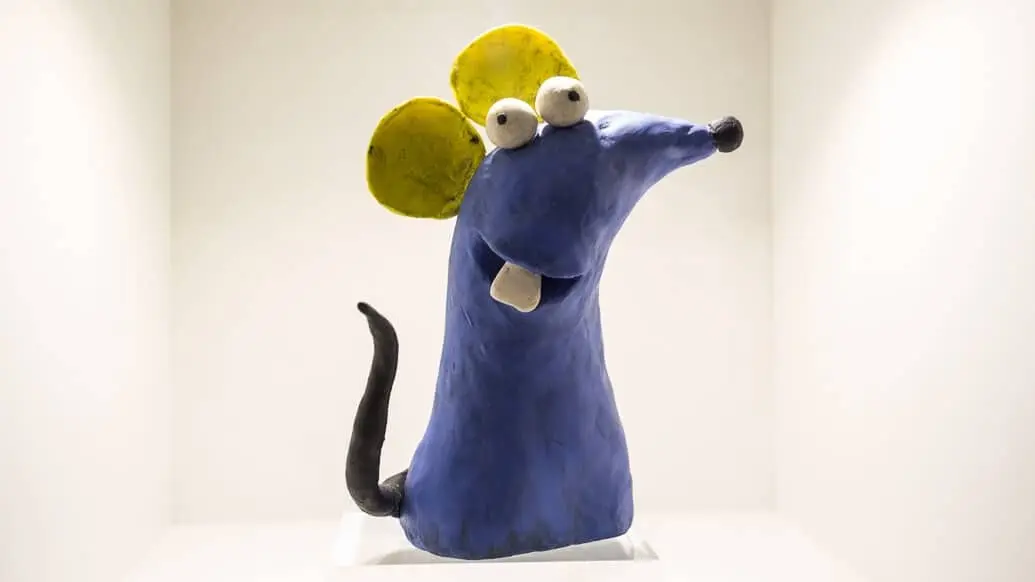We replaced about 60-70% of our backyard with native plants, trees, and shrubs. It was a shit ton of work but I saw a hummingbird for the first time in my life! And moths mimicking hummingbirds. And friendly bees. And weird beetles. And other birds galore. I rarely have to water.
Now our preschooler has room to roam and so so much to explore (and weird bugs to chase mom around with).
Such a heartwarming story. Thank you. Reminds me of my grandfather and his garden when he was alive.
What all did you do to replace it? I’m starting to reclaim my yards in my new place (finally getting dandelions!!) and my initial attempt at clover didn’t take as much as I wanted it to. Really want to get my yard to as close as native and wildlife friendly as my city will allow.
Not op but I grow pollinator gardens in my community garden which typically attracts bees, hummingbirds etc.; check with your local nursery because there should be a native plant seed mix you can buy.
You may be a little late in the season (assuming northern hemisphere) for most seed mixes because I’ve mostly seen suggested sowing in fall or late spring
For what it’s worth, it’s perfect planting time where I am, still another week of potential frost in southern Alberta, Canada.
Depending on where you live the common dandelion may not be a native plant. They were introduced to North America from Europe.
For better or worse, my local/state government doesn’t consider them noxious weeds because they’re so firmly established that we can never get rid of them.
More not worth the cost to fight, so embrace it. Our city stoped spraying for broadleaf maybe 5 years back.
That and you can eat both the greens and roots which is great.
The bunnies in my neighborhood appreciate this very much.
(finally getting dandelions!!)
My friend they grow in the film of construction dust that has built up in the gutter of my shed
We’re only getting them in the edge of the yard, and it took a bit over a year to get that. Given how quickly the crab grass returned, I’m guessing the previous owners used A LOT of chemicals to keep their yard pristine.
I just love seeing people walking around with their disposable sprayer of round up to kill every single dandelion they see. Who’s the weed?
DM me with your location and I can pass you some resources. :)
Dandelions are the best. I try to harvest them when I can get a bunch for lotion and things. They’re nitrogen affixers. They help heal the soil.
Aesthetically pleasing my ass.
It’s not even aesthetically pleasing.
There’s a guy on youtube that talks about bringing back native plants to an area and all the benefits that come with it.
He usually just does a controlled burn and comes back a while later and it’s back to native plants. Dude has a lot of cool knowledge but it’s funny to me the format is basically explain-burn-check back later.
Don’t know the channel, but wouldn’t that result in a bunch of invasive species creeping in, too?
One of the things with natural lawns is you can’t just let your yard do its thing. Lots of the plants you’ll get with that are invasive. You do have to do some kind of planning and maintenance.
He’s almost certainly in America, where a lot of the ecological systems are supposed to burn every once in a while. It’s also common that the invasive species can’t handle it. We’ve messed up a lot of our ecosystems by suppressing wildfires, and it’s causing multiple kinds of problems.
Down with monoculture! Down with monoculture!
I might have anger issues because any time someone tells me to touch grass I want to just violently make them eat the said touching grass.
…touch grass, you internet tough guy
My husband and I tried so hard to just let our lawn be what it wanted to be. All the clover, dandelions, wild strawberry, wild onion and ginger absolutely took over. In the back, it’s completely fine. We get a lot of brown spots and mud during winter when it dies back, but come spring it’s back to thriving. In our front yard though, enough of it died back that a heavy rain washed a lot of our yard into our driveway. We tried to manage it for a year before giving in.
So now, our front yard is an ugly but pristine monoculture grass hellscape. The back though is much larger, and still full of the awesome native plant goodness. I know nature is thriving back there because I pretty much cannot use my yard during summer due to the insane amount of bugs. There is a thriving ecosystem with all sorts of wildlife, from bunnies, squirrels and chipmunks to cardinals, robins and owls. Occasionally even a stray fox or mallard can be seen around the creek. And I live in the suburbs of a major metro area, and can hear I-35 from my house. It really is quite remarkable how natural ecosystems can thrive with just a tiny bit of encouragement.
I hope the city has figured out by now I’m not cutting my “weeds”. Gave me shit last year. The ordinance is so vague and allows the city to just go onto your property and cut everything down and bill you for the time. I fucking dare them.
Most of the time these local ordinances have exceptions for raised beds, and their definition of “raised bed” is so vague you can just line your yard with decorative bricks and declare the whole thing is a raised bed.
Alternatively you can have your property designated as a wildlife preserve, even in residential neighborhoods.
Our city (in Germany) gave us shit a few times, but it was because of our hedge growing onto the street. At a certain point I get it, you are responsible for your plants and if they obstruct traffic etc. Another hypothetical scenario would be where you have a bunch of invasive plants that the city tries to eradicate? But if they just complain about the aesthetics it is really pathetic…
Its purely aesthetics. They put it in because like a third of the “city” (like 5k people) is abandoned so they want to go on to those properties to cut everything down. Which is dumb because you have to poison the invasive weeds that are here to kill them. They just pop right back up if you cut them. But I guess thats how they keep the money coming in, they charge like $400 per hour. I manage my garden, its far away from the road, I pull or poison any invasives. But I let native plants grow. Old people just see plants that aren’t perfectly manicured and call the city. And nobody has lawns here, they want the entire city to just be bare gravel.
Fuck that’s so depressing :( I wish you luck on your fight for a wild yard!
After a certain height your weeds aren’t providing any extra value to pollinators and are just inviting creatures that carry disease to hold up there. That’s why the city insists on cutting them. Just keep your weeds to a reasonable height, it still helps the pollinators and keeps rats from breeding incessantly. Untended to yards are shown to increase rats in the area. You don’t want the plague do you? Cuz that’s how you get the plague. (The last two sentences are hyperbole obviously.)
Fun fact, naturally growing grass in Midwest is generally of the phalaris species, you can extract a very powerful hallucinogenic drug called DMT from it in three very simple steps. All you need is a lawnmower with a mulch bag and some pool cleaning supplies.
how
Cut it into really small pieces, soak it something that extracts the fat cells from the grass (BBQ lighter fluid works for this), then use and acid and a base to neutralize your bucket of shit and all the DMT sinks to the bottom in solid form so just separate it from the liquid.
All the brown shit at the bottom of your concoction is pure DMT.
Do I drink it right out of the bucket?
You’re supposed to smoke it, but you better get buckled up before you do because it’s fucking crazy.
Oh fuck that’s honestly really cool
I did some cursory research, and it looks like the leaves also contain toxic compounds, such as gramine, that can cause organ damage, including brain damage.
Aesthetically pleasing like a blank canvas, a bare concrete wall, a block of clay, an empty manuscript: Brimming with potential to become something.
I see all this about grass not being native, but to where? It must be native somewhere.
Grass is native to lots of places, lawn that’s meticulously kept clean of every other plant species? Not so much.
The meme doesn’t say that grass isn’t native, but that they want to replace it with native plants. I do get your point though, it sounds like it excludes grass. According to Wiki, Lolium perenne (hugely cultivated grass worldwide) “is native to Europe, Asia and northern Africa”. I think why people explicitly say that they want to replace their lawn with native plants is because less knowledgeable people might go with introduced and widely cultivated species. This would not be as effective in bringing back wildlife. Introduced plants are often not great host plants for pollinators for example. So it is great when people specifically replace their lawn with plants that are native to their region.
I mean I’d rather have my entire yard and have no bugs live close to me and not have to worry about the grass. Would absolutely love getting rid of all plants near me except maybe having one little greenhouse to grow some weed in. Insects and bugs of any kind are not welcome anywhere I might encounter them.
Just scalp it and you have more native weeds than you want
Saw a man watering his yard the other day omw home from work. I drive through a ridiculously bougie area on my commute and see so much weird and out of touch shit
Ridiculously bougie in the US means “no meth zombies running up to your car when you stop at a red light”, correct?
No, bougier. Like mansions and supercars and garages the size of my house and gigantic yards with topiaries. Absolutely crazy shit that screams “We have fuck you levels of money”
It’s honestly kind of disgusting, tbh.
Bugs don’t care what type of green you have in your lawn. You can even mow.
Just don’t spray insecticide on your lawn.
Edit: also, why the fuck would you remove existing lawn to replace it with new growth? That’s like indiscriminately bulldozing every home in a city to rebuild them with whatever is the current trend in sustainable housing. Where do people live in the mean time? Please don’t let this person, or me for that matter, inform your opinion.
That’s just simply vastly and easily proved to be untrue.
Insecticide is a lot of it but lack of variety, lack of height, lack of pollinators, lack of pollinating plants and light pollution are all compound factors.
I’ve seen a lot of opinion pieces about the matter, but they never cite any research that definitely pins substantive loss of biodiversity on lawns. It’s an issue globally, but as usual the individual is the scape goat instead of the exponentially greater impact of corporations.
Because there doesn’t need to be a study. We know reduction of habitat has a direct relation to population, it would be exceptionally weird if it weren’t.
We knew dinosaurs were scaly, too. Everything deserves further study, and it’s foolhardy to advise everyone to rip up their lawns and plant…what, exactly? White clover, another invasive species.
I’m sure I can find a study but do you need a study for common sense?
Ed:
Oh, you didn’t need to do that. You won’t find a study supporting your argument, I’ve looked thoroughly before. Case in point, the study you shared. It actually opposes your argument, by finding suburban lawns support a diverse and abundant bee community. Of the three mowing frequencies they studied (one, two, and three week intervals), they actually found every two weeks was optimal for the bees.
Like I said to begin with, I just don’t think what species of green you plant in your lawn matters nearly as much as not using insecticide.
It doesn’t but do go on.
We suggest a ‘lazy lawnmower’ approach as an additional option for managing yards for wildlife. The recommendation to mow lawns less frequently to help promote bee conservation might garner broad public support (potentially compared with lawn reduction or replacement) because it more closely aligns with current single-family homeowner motivations for adopting lawn-dominated yardscapes. A New England study on lawn care attitudes and behaviors found that householders were concerned about water quality and thus were willing to try al- ternative lawn care approaches that were more environmentally friendly (e.g., higher mowing height, reduced fertilizer application). However, the authors also noted significant barriers to changing be- haviors including concerns that the alternative lawn care would not be as aesthetically pleasing, would incur additional financial burdens, and would require more time for upkeep (Eisenhauer et al., 2016). Likewise, in a multi-city survey, respondents ranked various landscaping deci- sions in which aesthetically pleasing, weed-free, and ease of main- tenance topped the list, while provisioning for wildlife ranked fifth out of eight choices (Larson et al., 2015). These studies suggest that wild- life-friendly landscaping has some support, but the acceptance of weeds and the inclusion of more native plants (which are not as showy as their non-native congeners; Frankie et al., 2005) might be at odds with more preferred management goals of aesthetics and ease of maintenance (Lerman et al., 2012b; van Heezik et al., 2012). Based on our interac- tions with participating households and their neighbors, our treatment of a three-week mowing frequency appeared unkempt and exceeded the tolerance of many homeowners and their neighbors, and thus the two- week regime might reconcile homeowner ideals with pollinator habitat. Moving towards a mechanistic approach when studying urban biodiversity (Shochat et al., 2006) increases our ability to directly link management with ecological outcomes, and ultimately lead to effective action. Our experimental approach demonstrated how altering lawn management decisions influences bee abundance despite the inherent variability present in suburban yards. Manipulating lawn mowing be- haviors also demonstrates a new and creative approach for supporting urban biodiversity by rethinking the role lawns play towards enriching urban areas. Mowing less frequently is practical, economical, environ- mental and a timesaving alternative to lawn replacement or even planting pollinator gardens, that has the potential to be widely adopted if it can overcome barriers to social acceptance. Most importantly, our research shows that individual households can contribute to urban conservation.
Grass monoculture lawns are basically deserts. You are not hurting anything by ripping it all out and letting native plants take over








